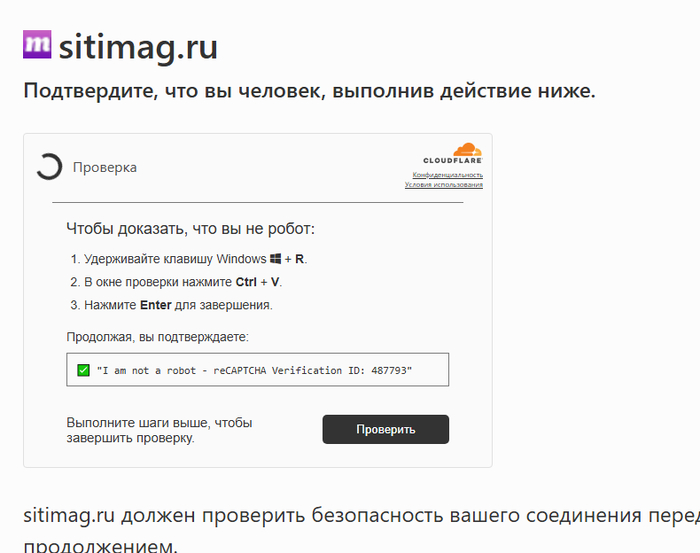Узнаю мeйлpyшную систему безопасности, бессмысленную и беспощадную. У них реально считается, что полная смена имени - повод для паники. У меня почти также произошло неделю назад с почтой на мeйлpy.
Регал я ее лет около 15 назад, ума у меня было тогда меньше (да и сейчас немного) и в поле Имя Фамилия я ввел банального Ивана Иванова. Недолго пользовался почтой, потом появился телефон на андроиде и перешел на гугловскую почту, успешно забыв про мeйлрушную. В 2022-м на всякий случай вспомнил пароль и зашел - аккаунт, что меня приятно удивило, был еще живой, из облака все пропало и само облако стало меньшего объема, но да ладно. Их не смутило, что в почту зашли спустя многолетний перерыв из совершенно другого города чем тот, где почта была создана.
Когда в этом году летом после перерыва снова зашел после очередного переезда там тоже никаких подозрений на входе не встретил. После ввода белых списков последние пару месяцев пользоваться стал активнее, потому что больше, извините, часто больше не чем когда нет доступа к проводному. И меня стали люди, которые моего настоящего имени не знают (а я, по старой доброй традиции, не люблю в интернетах представляться) стали звать Ваней, потому что видели это имя в отправителях.
Чтобы каждому не объяснять, что я не Иван, решил сменить имя-фамилию, не имея фантазии, на первую и последнюю часть логина. В официальных гайдах никаких предостережений против этого не увидел. Ничего человечьего не выходило, потому что, как и по моему нику на пикабу видно, выдумывать ники я не силен, так что звать меня стали примерно "kusok kirpicha" (имя изменено, во всех смыслах).
И буквально на следующий день мeйл сообщил мне о "попытке взлома" и не пустил меня в аккаунт. Никаких входов посторонних при этом не было, спам по контактам от меня ни в кого не полетел, входил все время с одного телефона с одного айпи одного города. При вводе правильного пароля, для "защиты от взлома" предлагалось ввести и подтвердить телефон, на чем мое использование мeйл.рушной почты завершено, большое спасибо за заботу. Когда поводы для паники были хоть какие-то, мeйл.ру и не думал защищать мою почту, а когда ничего важного не произошло, сразу же получил равноценный бану подарок. Может, конечно, это совпадение и "после не значит из-за", но основания так предполагать имеются.
И самое тут страшное, что будь "взломщик" не глюком кривого скрипта, а реальным, ему абсолютно ничего не мешало бы навсегда увести у меня аккаунт привязав к нему нужный номер и сменив после этого пароль. И свой номер я бы уже привязать при всем желании не смог бы. Адекватнее тут было бы или уж действительно бан без права восстановления по принципу "так не доставайся ты никому" или, разумеется, лучше не принимать действий без реальных признаков взлома.
Справедливости ради, саму порочную идею "человека без привязанного номера, кажется, взломали, давайте мы ему при предъявлении верного пароля предложим ультимативно привязать телефон!" исповедует еще много кто, начиная с гуглов. И я не представляю в каком сценарии она может реально защитить. Когда "взломщик" вдруг теряется без телефона под рукой и на опережение настоящий владелец успевает привязать свой телефон? А такие гонки на скорость с хакером, в которые только при большом везении выиграть можно, они точно про безопасность? Если сервис хочет сказать, что ему просто не нужны юзеры без подтвержденного номера, то это можно в более этичной форме это сделать и не сочинять сказки про взлом.
А если уж вопрос про реальную безопасность, то привязка номера, в идеале, личное дело каждого. По своему опыту, риск потери сим-карты с номером намного выше риска забыть пароль или настоящего взлома. Телефоны у меня крали, я их терял сам, номера отключались оператором из-за "долгой неактивности" и лишь потому, что дело было во времена давние, никаких чувствительных сервисов к ним привязано не было. Кто иначе оценивает риски - пусть привязывает, пожалуйста, только меня не заставляйте, особенно вот так вот.
Мораль для ЛЛ: Лучше имена просто так теперь нигде не менять, на всякий случай.











